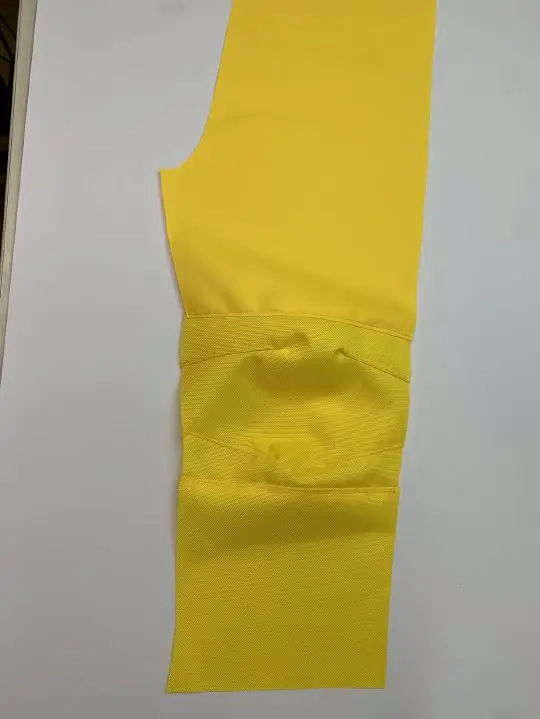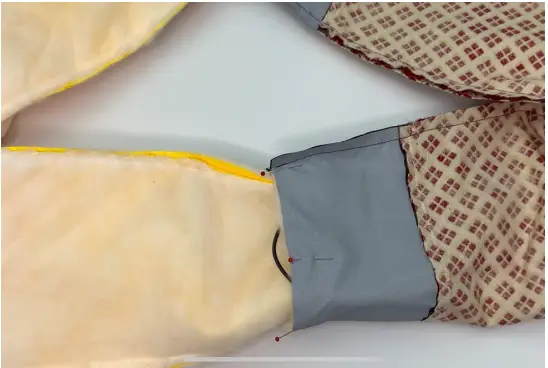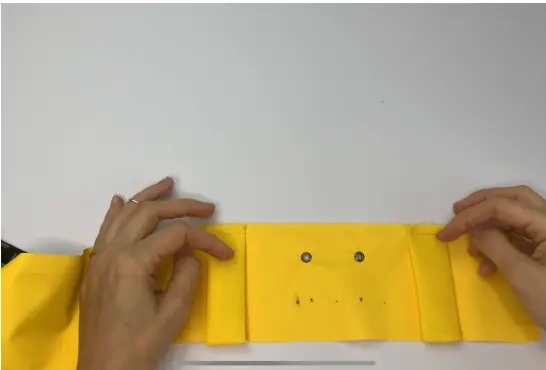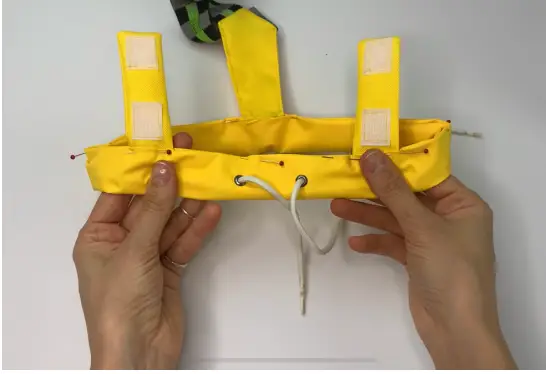Brighton kids outdoor pants

Before sewing
We recommend using membrane fabrics for this overalls, because they are capable to retain moister. Fleece is our recommendation for the lining. It can be used with taffeta, foil lining or any other smooth lining. Isosoft 100-150 or Alpolux 100-150 are good options for the insulation.
For the membrane, it is better to use special thin and sharp Microtex Needles and special foot (Presser feet with sliding sole). Very sharp pins are recommended in the process of cutting out parts from the membrane. Pin parts only within the allowances, as pin marks might remain on the fabric.
Supplies
MEMBRANE fabric
Insulation for clothe
Lining fabric. Choose for yourself: fleece or taffeta, or combine.
Grommets – 6 pieces
Triglide slide buckle – 5 pieces
Elastic band for suspenders 1,5 m (59,1 in)
Elastic cord 1 m (39.37 in)
Fabric consumption (cm / in)
| Height Size | 86 18 moths | 92 2years | 98 3years | 104 4years | 110 5years | 116 6years | 122 7years | 128 8years | 134 9years | 140 10years |
|---|---|---|---|---|---|---|---|---|---|---|
| Main Fabric | 55/21,7" | 60/23,6" | 65/25,6" | 70/27,6" | 75/29,5" | 80/31,5" | 85/33,5" | 90/35,4" | 95/37,4" | 100/39,4" |
| Fleec | 40/15,7" | 45/17,7" | 50/19,7" | 55/21,7" | 60/23,6" | 65/25,6" | 70/27,6" | 75/29,5" | 80/31,5" | 85/33,5" |
| Insulation | 55/21,7" | 60/23,6" | 65/25,6" | 70/27,6" | 75/29,5" | 80/31,5" | 85/33,5" | 90/35,4" | 95/37,4" | 100/39.4" |
| Taffeta | 15/5,9" | 15/5,9" | 15/5,9" | 20/7,9" | 20/7,9' | 25/9,8" | 25/9,8' | 30/11,8" | 35/13,8" | 35/11,8" |
Pattern pieces names

1 – back pant leg, main fabric, number of pieces – 2
2 – lining, fleece, number of pieces – 2
3 – hem facing, main fabric, number of pieces – 2
4 – front, top piece, main fabric, number of pieces – 2
5 – front, bottom piece, main fabric, number of pieces – 2
6 – front, knee piece , main fabric, number of pieces – 2
7 – pocket piece, main fabric, number of pieces – 4
8 – belt, main fabric, number of pieces – 1

9 – support pattern, mark on the belt to suspenders number of pieces – 1
10 – Elastic 3 cm (1.18 in), strap, number of pieces – 2
11 – back, main fabric, number of pieces – 2
12 – loops, main fabric, number of pieces – 3
13 – elastic 3 cm (1.18 in), back bottom strap, number of pieces – 1
Measurements of the finished product (cm / in)

Layout of parts on fabric
Main fabric
For size 12 month
Width of fabric – 1,5 m;
fabric length – 0.58 m

For size 7 years
Width of fabric – 1,5 m;
fabric length – 0.98 m

Layout of parts on fabric
Fleece
For size 12 months
Width of fabric – 1,5 m;
fabric length – 0.45m
For size 7 years
Width of fabric – 1,5 m;
fabric length – 0.64 m

Attention! All our patterns already contain 1 cm seam allowances.
Description of tailoring

Stitch the darts on the knee pieces and top stitch the allowances to the center.


Sew the top front pieces and bottom front pieces of the legs to the knee pieces. Top stitch the allowances.

Sew the reflective tape to the
back right pant leg.


Sew insulation to the wrong side of the pant leg pieces from the main fabric. Excess of insulation should be cut of.


Sew the pocket pieces to the front and back pieces of the pants, aligning the notches.


Pin and sew the pocket pieces, the front and back pant legs with the right sides together. Sew bar tacks on the front side at the entrance to the pocket on the front pant pieces.


Stitch the inseam of the pant legs. Hand stitch the allowances aside.


Insert one pant leg from the main fabric into the other with the right sides together. Pin and sew around the crotch.


Sew the facings from the main fabric to the pants lining. Top stitch allowances to the facings.

Fold one pant leg in half with the right sides together. Pin and stitch along inseam.

Insert one pant leg from the lining into the other with the right sides together. Pin and Sew a crotch seam on the lining, leaving a hole for turning out.

Use the presser machine to install 2 eyelets on the allowance of the bottom where marked, for inserting a round elastic band.


Cut the desired length of the elastic band. Attach one edge of the elastic band to the side seam allowance. Pass the elastic band through the first eyelet, pass it through the retainer, thread it through the second eyelet and secure the end at the side seam allowance on the other side.

Sew hem of the pant leg from the main fabric with the facing of the lining with the right sides together.


Suspenders. Stitch Velcro to the loop detail. Fold the loop detail in half with the right sides together. Stitch it, leaving one short edges for Turning out.




Fix elastic to the Triglide slide buckle. Then pull through the other triglide slide buckle and make a loop. See the picture.


Pin the elastic band to the back detail as shown, right sides together. Put the second piece of the back detail on top of elastic band aligning the edges. Pin and stitch it.

Stitch the side edges of the back. Turn out.

Install 2 eyelets to the belt.


Pin the loops to the belt. Pin the back to the belt with the right sides together. Sew in place.

Belt. Pin short edges of the belt right sides together. Stitch it, leaving a hole for elastic.


Fold belt allowances to the wrong side, thread the cord to eyelet, fold belt in half and align the sides. Top stitch the belt.

Pin the belt to the waistband with the right sides together. Sew in place.


Pin the lining to the belt, aligning the notches. Stitch it.
Turn the garment inside out and close the hole by stitching.

Thread the elastic band through the hole into the belt. Stitch the hole.

Top stitch the pant leg hem making the casing to the elastic cord.
If you are making trousers without suspenders, please see the instructions below. Sew the belt piece along the short edges, leaving a hole for threading the elastic band. Iron the belt in half lengthwise. Sew one long edge of the belt to the upper edge of the pants, stitch the other long edge to the upper edge of the pants lining. Bend the allowances down. Turn out your pants. Fix the belt with a stitch through the seam of sewing to the legs. Thread the elastic band through the hole into the belt.
The Outdoor pants with suspenders is ready!!!

